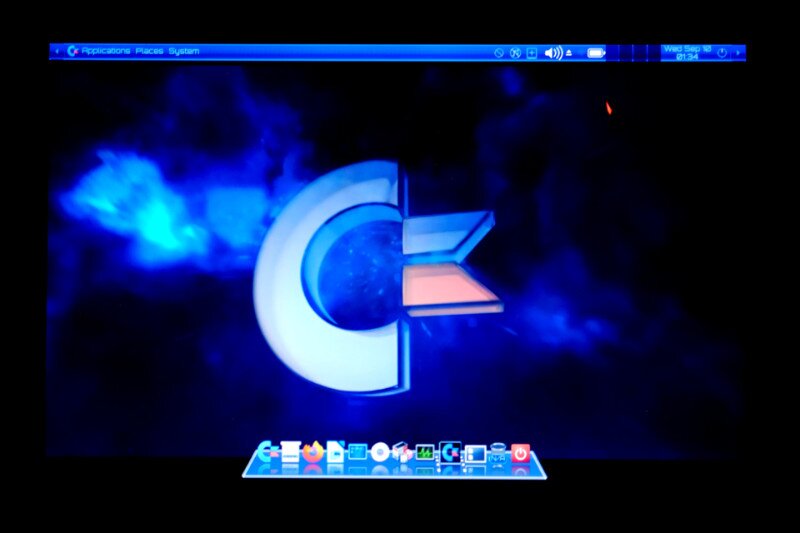
When I made a list of suggested replacements for Windows on those machines which Microsoft Corporation has deemed unsuitable for Windows 11, I left one out because I hadn’t heard of it. We’ll remedy that shortly, but first a little history.
Home and hobbyist computers have been around for awhile. When I was a kid during the Johnson administration (Lyndon, not Andrew), one year I received for Christmas a big box containing a series of experiment kits. One of them was an “analog computer,” which is to say a kind of electrical slide rule whose answers were determined by the resistance of wire in a coil. It was not, I’m happy to say, the vision of the future, though I’m sure there are applications where that kind of thing is useful even now.
There were even then, though not at my house, also the sprouts of digital computers among hobbyists. None of them did anything of much use, but within a decade we had products such as the Apple Computer 1. It did some stuff, but the general public was in no hurry to rush out and get one. Soon, there were various small computers available for sale in the backs of magazines; the one probably closest to being remembered were the products marketed by Clive Sinclair. His first computer was the dinky but futuristic looking ZX80 in 1980. You could get one for between $100 and $300, depending on how you wanted it outfitted. Its chief contribution, truth be told, was to convince people they might want a computer, but not this one.
There were some other makers as well, and a variety of programming languages. BASIC — Beginners' All-purpose Symbolic Instruction Code, but I think they made up the words to fit the acronym — led the way, but there were others. At the time I was doing some stories for Radio Netherlands’ “Media Network” program, and its host and producer, Jonathan Marks, was fascinated by the idea of being able to broadcast computer programs over shortwave. At the time and for a time afterwards, programs were stored on regular cassette tapes. Yes, the whole business was very slow, but we didn’t have anything to compare it to, so it didn’t seem slow. As an experiment, Jonathan broadcast a computer program over shortwave, for listeners to record to cassette, then try to run on their respective computers. I do not know if anyone succeeded. I, living in a city and surrounded by electrical noise, certainly didn’t. The program was written in a BASIC offshoot called Hobbyscoop, developed in the Netherlands. (And data can be broadcast over shortwave. I have heard it but do not know the details.)
The rise of electronic games led to consumer, as opposed to hobbyist, computers. You could now go into Crazy Eddie, or even a reputable store, and buy one. The big winner in this era was the Commodore 64. It was introduced in 1982 and is to this day the best-selling home computer ever. For more than a decade, through various models and even the Amiga line of machines that remain highly respected, Commodore was where it was at for people who didn’t want to plop down $5000 for an IBM PC that did word processing and ran spreadsheets and that was pretty much it. Where’s the fun in that? Commodore, Atari, and Radio Shack with its TRS-80 machines did well. For a while.
But time passed and marketing became a big deal. Apple had evolved to the Macintosh, with its postcard-sized screen, one-button mouse, and general oddness. People over time came to want 100-percent IBM-compatible machines. Commodore died out, as did a lot of also-rans.
The computing world has always been the home of crazy people. And people who grew up with Commodore machines remember them fondly.
So these crazy people did some of the exquisitely crazy things that computer people do. First, they produced a small case that could hold enough of a personal computer to work well — and from the outside they made it look like an early Commodore 64 computer, with all the guts inside the keyboard, just like the original, but modern in operation. Pretty crazy. (You get the case from them; the guts you buy and assemble yourself, but it’s easy if you’ve spent any time inside a computer.)
Then they came up with an operating system that to the extent modernity allows is inspired by the original Commodore operating system. That operating system is what we’re here to discuss today, because it’s said to be cool (and is said to run on any modern-ish computer).
Then — I said they’re crazy — they actually bought the Commodore company, though I have no idea what that comprises. Trademarks, anyway.
Now, back to the operating system.
It is Debian-based, though that phrase may mean any of a variety of things. It is, conditionally, good. The condition is that you’re not locked into the Commodore fans for much of anything. With luck — the installation is seemingly stuck at 12 percent, but in that it keeps talking to me from time to time in its barely understandable 1980s computer voice, I don’t think it’s locked up — it is an exciting desktop and various effects atop bog standard Debian. At this point maybe it will continue or maybe I will have to start over. I’m using an old (but still 64-bit, as required) ThinkPad X200 with 6 gigs of memory. That ought to be enough — it runs the latest Debian just fine.
While I wait, I’ll mention how I came to know about this odd but entertaining Linux variant. I’d never heard of it, but I make a point of following Christopher Barnatt on his informative and amusing “Explaining Computers” web and YouTube sites. He did a video about it, and it seemed worth taking for a spin.
Which led to a v-e-r-r-r-y long 36-gig download, which I then copied to a USB stick.
Even the opening screens are remarkable. There is music, animation, and a robotic computer voice that can sort of be understood, but if you have to count on it to read you the code to disarm a device that would destroy the world, we’re all goners. Then again, it’s coming through the scratchy ThinkPad speaker. The mouse pointer rotates like an arrow in flight. I think they’re using a customized version of the generally dislikable “Mate” desktop.
Well, until the install crashes. I’m starting to think it’s a hardware issue . . .
. . . Which it wasn’t. I tried it on three different hard drives, only to have it blow up here or there. (And changing hard drives in a ThinkPad is a nontrivial activity.) Actually, 12 percent was as far as I ever got.

I did manage to make a couple pictures of the initial animation, though. And I must say that the robot voice continues mumbling something that sounds like “McGonagle” this or that (it’s apparently supposed to be “Commodore”) long after the machine has made like Fort Knox and locked up solid. Might it have been the USB stick I was using? As it happened, the second item in the menu the installation program boots to is to check the installation media for errors, and the first thing I did was run that. It reported no problem. So.
These things happen. So I searched the Commodore OS user forum. There I found someone who had encountered installation difficulty due to an unsupported video card, but nothing that matched the symptoms I was encountering. I tried to log in to the forum to ask about it, but after filling in username, email address, and so on and deciphering to the best of my ability indistinct scribbles that were supposed to prove I am not a robot — ironic, considering the mechanical jabbering being emitted by my otherwise dead machine — I clicked “Submit.” Whereupon I was delivered back to the form all over again, now once again blank. I tried this several times, all with the same result.
I put the hard drive with Debian on it back in the machine and everything in Debian Trixie world was fine. So I don’t know what to make of Commodore OS 3.0.
Christopher Barnatt reported on the sterling array of interesting productivity software there as well as the many, many, many games. I’m not a gamer, but it would have been fun to go through them, particularly the ones from the Reagan administration. It would be nice to be able to recommend it to those forced, now, to switch away from what Microsoft hath wrought. But I can’t.
Still, I was able to bask in that nostalgic feel, a reminder of computing days long past. Things frequently didn’t work then, either. And frequently I’d be up all night trying to find a way to make them work.
It’s coming up on 4 a.m., and my enthusiasm seems not to be now what it was then. And, here’s hoping, I might be no longer crazy.

Dennis E. Powell is crackpot-at-large at Open for Business. Powell was a reporter in New York and elsewhere before moving to Ohio, where he has (mostly) recovered. You can reach him at dep@drippingwithirony.com.
You need to be logged in if you wish to comment on this article. Sign in or sign up here.
Start the Conversation